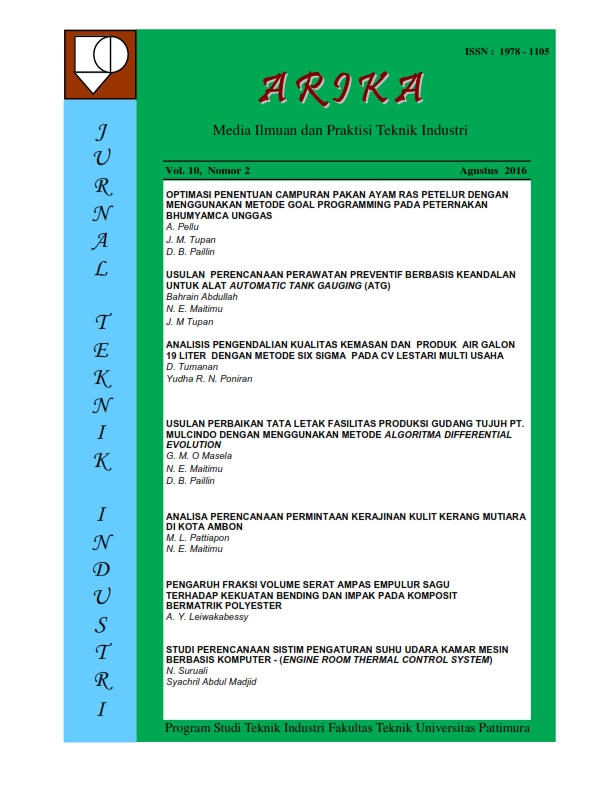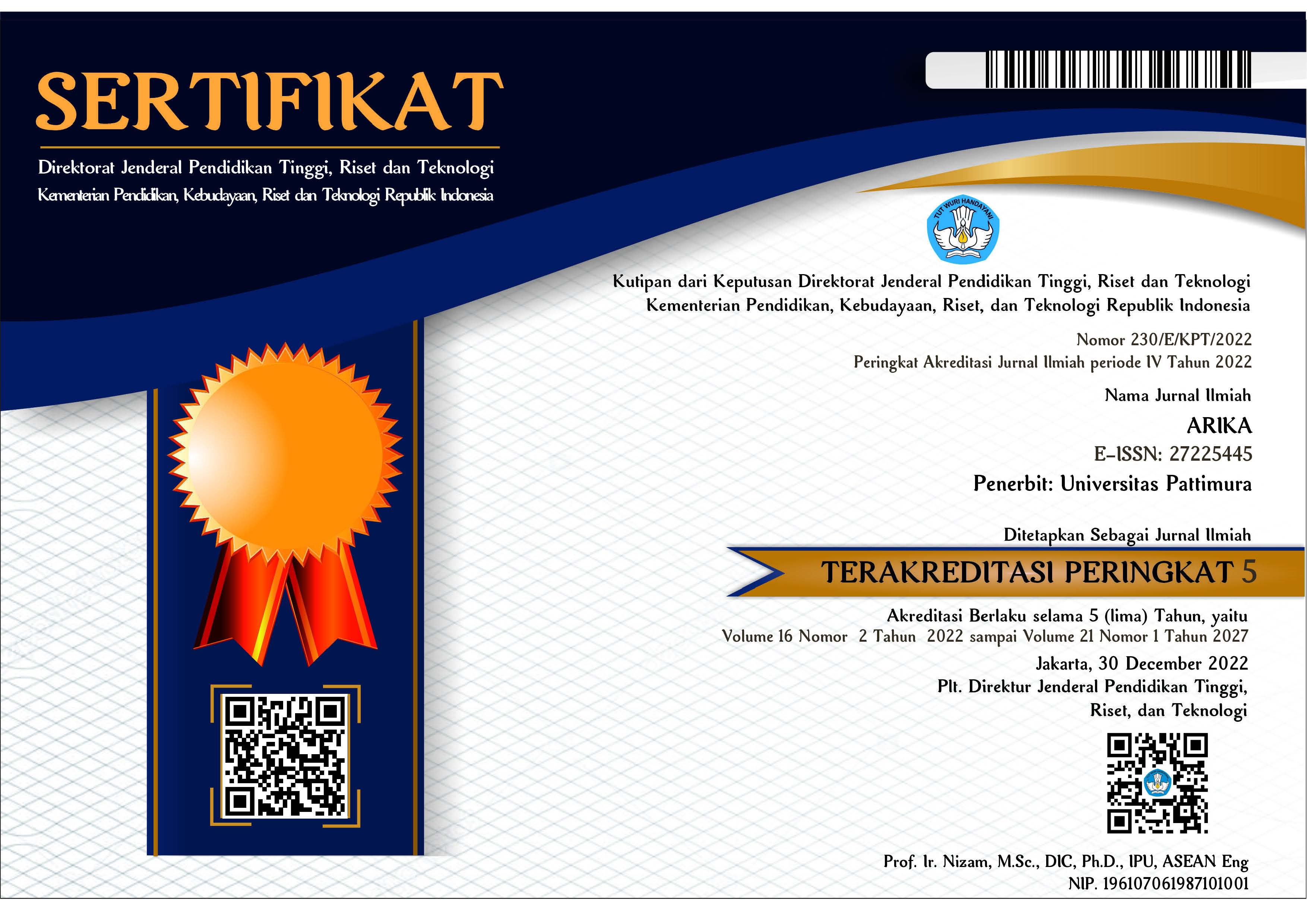USULAN PERBAIKAN TATA LETAK FASILITAS PRODUKSI GUDANG TUJUH PT. MULCINDO DENGAN MENGGUNAKAN METODE ALGORITMA DIFFERENTIAL EVOLUTION
Abstract
Penelitian ini dilaksanakan dengan tujuan untuk (1) Membuat layout usulan rancangan tata letak pada gudang tujuh PT. Mulcindo, (2) Meminimasi momen perpindahan jarak dan ongkos material handling.Hasil Penelitian menunjukan bahwa (1) Layout awal tata letak fasilitas produksi gudang 7 PT. Mulcindo masih dapat dioptimalkan lagi dengan membuat layout usulan menggunakan algoritma differemtial evolution. (2) Layout usulan yang dihasilkan oleh algoritma differential evoluion yang menggunakan 3 alternatif yaitu: Alternatif 1 “ Mutation Factor 0,3 dan Crossover Rate 0,7â€, Alternatif 2 “ Mutation Factor 0,7 dan Crossover Rate 0,3â€, dan Alternatif 3 “ Mutation Factor 0,8 dan Crossover Rate 0,5†Dari 3 alternatif tersebut masing-masing dibuat dalam 5 kali replikasi berbeda, dengan biaya optimum dari 3 alternatif tersebut sebagai berikut. Alternatif 1 : Rp. 8.254.950,2 (Replikasi Ke-4), Alternatif 2 : Rp. 8.730.388,56 (Replikasi Ke-1) dan Alternatif 3 : Rp. 8.273.260,33 (Replikasi Ke-4) Dengan demikian ongkos material handling yang paling optimum adalah pada Alternatif 1 Replikasi ke-4 yaitu Rp. 8.254.950,2-per bulan, sehingga lebih optimum dari OMH awal yaitu Rp. 14.792.360,-per bulan, dengan persentase 55.8%.
Downloads
An author who publishes in the ARIKA Jurnal agrees to the following terms:
- The author retains the copyright and grants ARIKA journal the right of first publication of the work simultaneously licensed under the Creative Commons Attribution-ShareAlike 4.0 License that allows others to share the work with an acknowledgment of the work's authorship and initial publication in this journal.
- The author is able to enter into separate, additional contractual arrangements for the non-exclusive distribution of the journal's published version of the work (e.g., post it to an institutional repository or publish it in a book) with the acknowledgment of its initial publication in this journal.
- The author is permitted and encouraged to post his/her work online (e.g., in institutional repositories or on their website) prior to and during the submission process, as it can lead to productive exchanges, as well as earlier and greater citation of the published work (See The Effect of Open Access).










